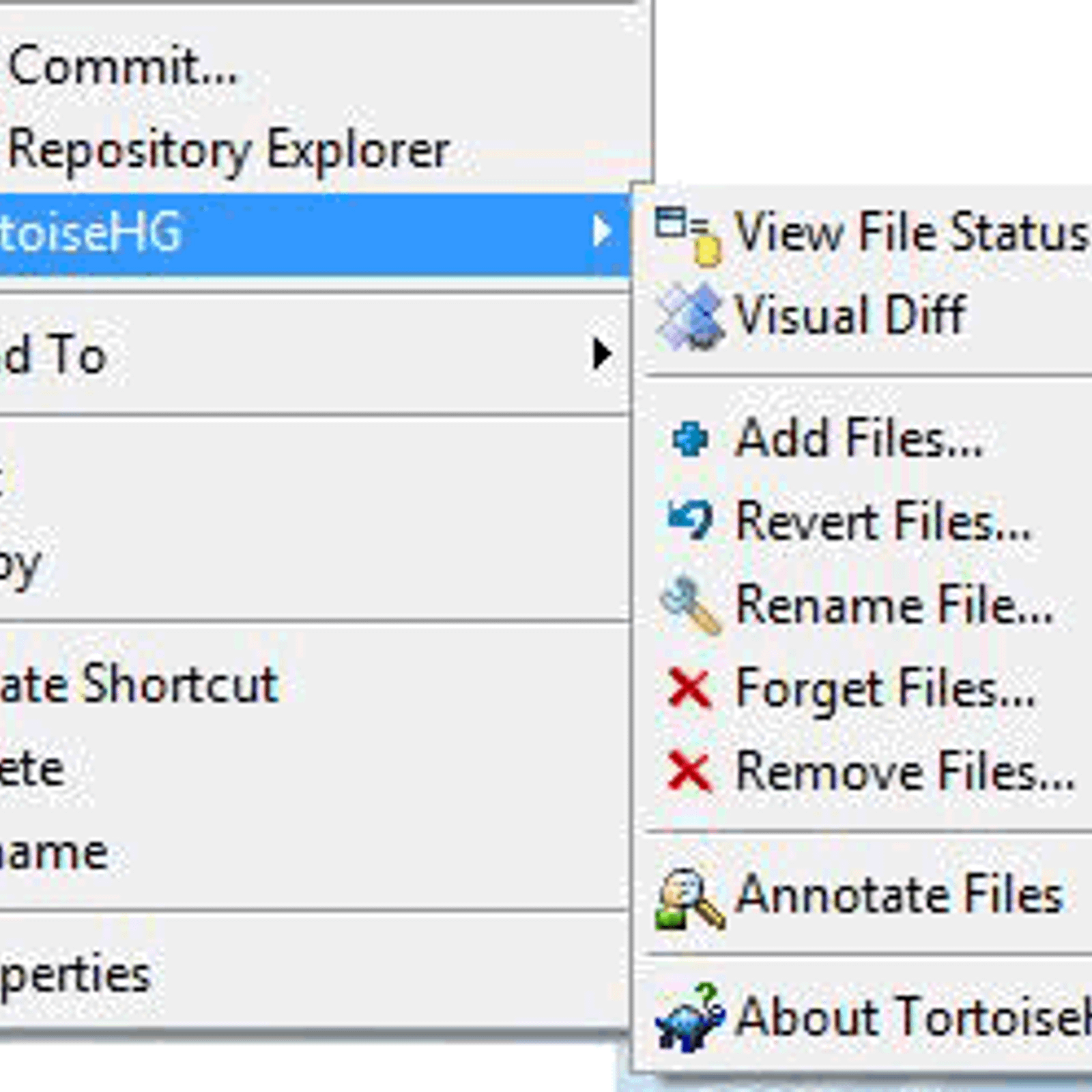
TortoiseHg
TortoiseHg is a comprehensive graphical user interface (GUI) for the Mercurial distributed version control system. It provides a user-friendly way to manage your repositories, track changes, and collaborate with others, particularly well-integrated with the Windows File Explorer.
About TortoiseHg
TortoiseHg acts as a powerful and intuitive front-end for Mercurial, making version control accessible to users who prefer a visual interface over command-line interactions. It seamlessly integrates with the Windows shell, allowing you to perform most version control operations directly from your file explorer context menus.
Key functionalities include:
- Repository Management: Easily clone, create, and manage your Mercurial repositories.
- Change Tracking: Visualize the history of your project, view commit details, and understand the evolution of your codebase.
- Committing Changes: Stage and commit your code changes with clear messaging and review capabilities.
- Branching and Merging: Create and manage branches for parallel development and perform merges with built-in tools.
- Integrated Tools: Access features like visualizing the commit graph, comparing revisions, and resolving merge conflicts.
- Support for Extensions: Leverage Mercurial extensions to enhance functionality, including popular workflows like Git-flow (through extensions like hgflow).
TortoiseHg is particularly valued for its ease of use, especially for those new to distributed version control. Its tight integration with the desktop environment streamlines common workflows and reduces the need to switch between different applications. It provides a visual representation of your repository, making complex operations more understandable.
Pros & Cons
Pros
- Seamless Windows File Explorer integration.
- User-friendly graphical interface for Mercurial.
- Visual representation of repository history and commit graph.
- Built-in tools for diffing, merging, and viewing history.
- Supports Mercurial extensions for enhanced functionality.
Cons
- Limited to the Mercurial version control system.
- Primarily focused on the Windows platform.
What Makes TortoiseHg Stand Out
Native Windows Shell Integration
Offers unparalleled integration with Windows File Explorer for seamless version control operations from the desktop.
User-Friendly GUI for Mercurial
Provides an intuitive graphical interface that simplifies complex Mercurial commands and workflows.
Features & Capabilities
10 featuresExpert Review
TortoiseHg Software Review
TortoiseHg serves as a robust graphical front-end for the Mercurial distributed version control system. Its primary goal is to make Mercurial more accessible and user-friendly, particularly for those who prefer a visual interface over command-line interaction. The most significant strength of TortoiseHg lies in its deep integration with the Windows operating system's shell.
Upon installation, TortoiseHg extends the context menus within Windows File Explorer. This means that common version control operations, such as committing changes, updating repositories, reverting files, and viewing logs, can be performed simply by right-clicking on files or folders within your working copy. This level of integration significantly streamlines daily version control tasks and reduces the need to open separate applications.
The core components of TortoiseHg include a repository explorer, a commit editor, and various tools for diffing, merging, and viewing history. The repository explorer provides a clear visual representation of the commit graph, making it easy to see the branching structure and the lineage of commits. This visual aid is invaluable for understanding the history of a project and identifying merge points or divergence.
The commit editor is well-designed, allowing users to easily stage changes, write detailed commit messages, and review the files being committed. It provides a clear view of the differences between the current working copy and the last committed version, helping users ensure they are committing the correct changes.
Merge operations are handled with a built-in 3-way merge tool. While the effectiveness of any merge tool can vary depending on the complexity of the conflicts, TortoiseHg's integrated tool provides a visual interface to help resolve discrepancies. This eliminates the need to configure and launch external merge tools for routine conflicts.
Beyond the core functionalities, TortoiseHg supports Mercurial extensions, which can significantly expand its capabilities. For instance, extensions can be used to integrate workflows like Git-flow (through hgflow), bringing structured branching strategies to Mercurial projects managed with TortoiseHg. This extensibility allows users to tailor the tool to their specific project requirements and development workflows.
Performance is generally good for typical repository sizes. The interface is responsive, and operations execute with reasonable speed. The overhead of using a GUI over the command line is negligible for most common tasks.
While TortoiseHg is specifically designed for Mercurial, its design principles and user interface share similarities with other popular Tortoise-named version control clients, such as TortoiseSVN and TortoiseGit. This can make the transition easier for users familiar with those tools.
In summary, TortoiseHg is an excellent choice for Windows users who utilize Mercurial for their version control needs. Its seamless shell integration, intuitive interface, and comprehensive set of tools make it a powerful and efficient way to manage source code and collaborate on projects. It effectively lowers the barrier to entry for Mercurial, making distributed version control more accessible to a wider audience.



